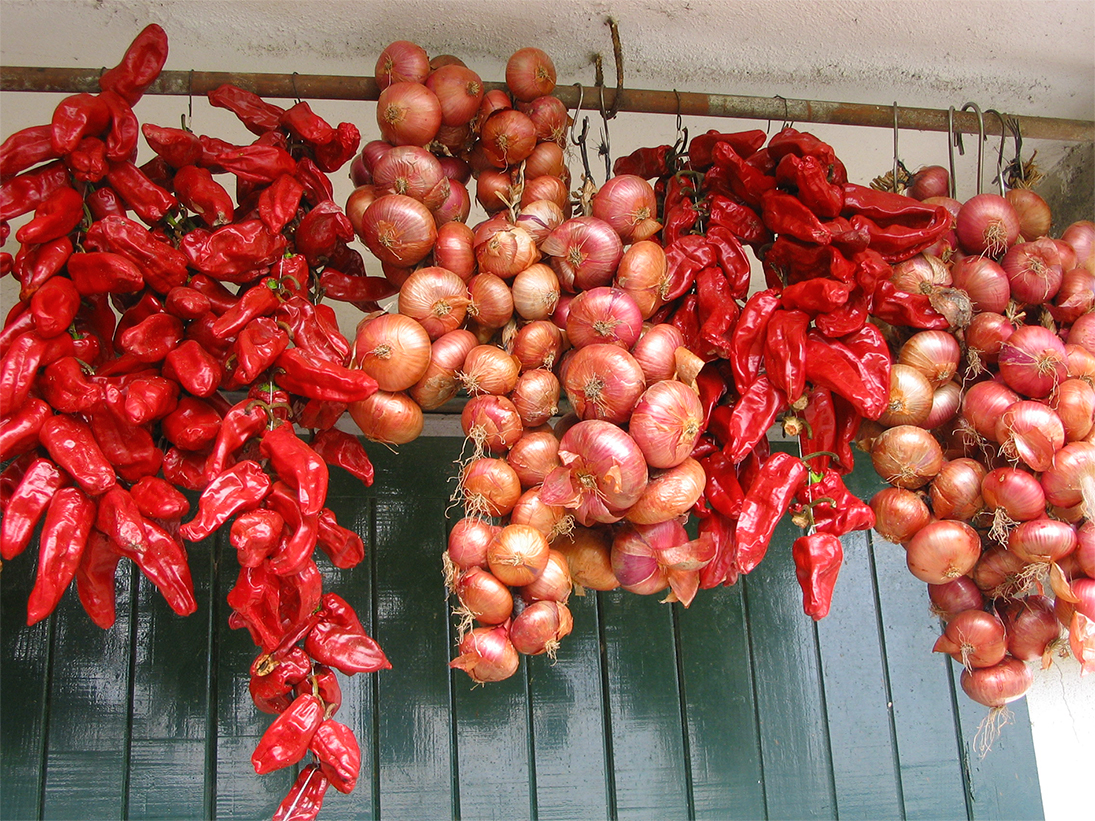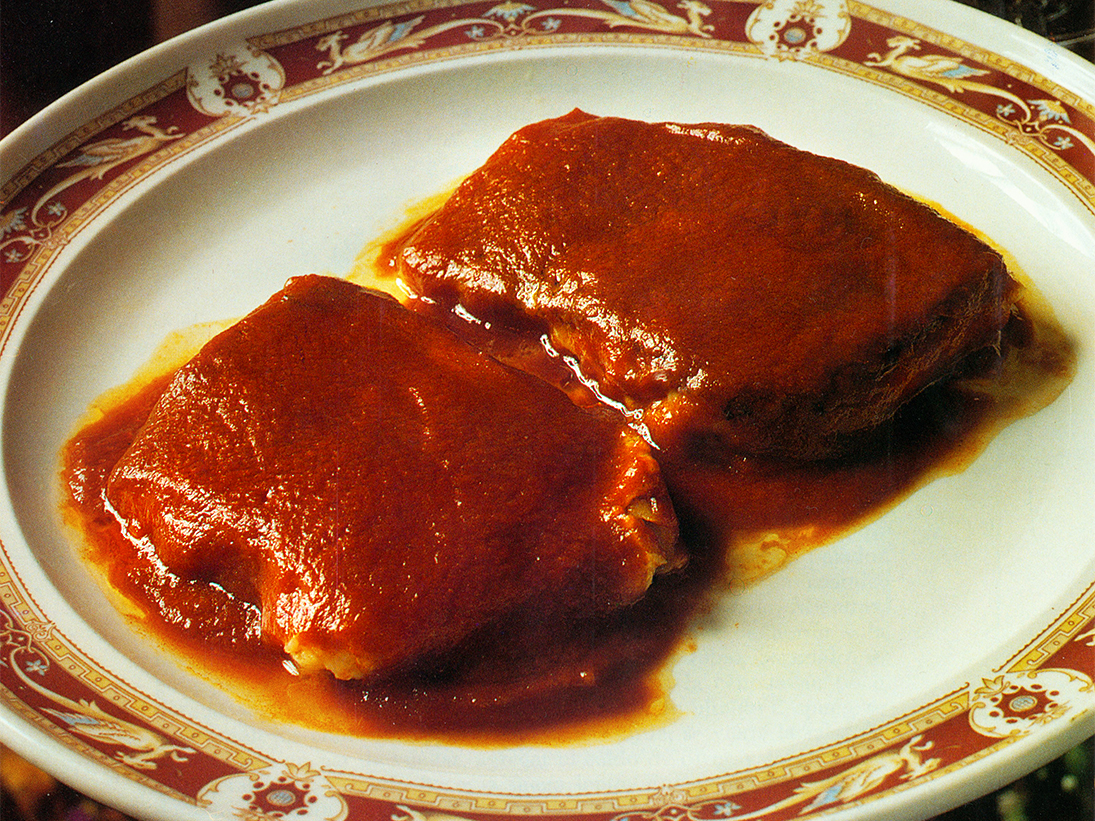Basque ethnography at a glance

Strings of red peppers and onions. Akaitze Kamiruaga. Labayru Fundazioa Photographic Archive.
As Miguel de Unamuno said, natives of Bilbao are genuinely referred to as bilbainos and bilbainas, rather than by their quadrisyllabic counterparts. Indeed, placing the accent marks on bilbaínos and bilbaínas requires an immense effort for a Bilbao born and bred, because it contradicts the way we pronounce them, the two consecutive vowels they contain remaining bound in the same syllable. The voice of local citizens is probably the best source of evidence for the correct spelling and pronunciation of words that identify them. So the absence of hiatus is therefore more than justified.
That relates to the matter at hand; namely, the appropriate noun and adjectival form for the people of Bizkaia, our traditions and whatever concerns our land. For one thing, the use of ‘Biscay’ seems outdated, regardless of it being the norm in former times. Some years ago ‘Bizkaia’ became the official designation of the historical territory, both in Basque and in Spanish. And for another, it follows from the foregoing that ‘Bizkaian’, bizkaina and bizkaino —unlike vizcaína and vizcaíno—, and bizkaitar, are all trisyllable.
Having clarified the orthographic issue, let us adopt an ethnographic view to talk about a local variety of red peppers used for colouring chorizo sausages, called choricero peppers, unquestionable protagonists of the conspicuously simple and very versatile Bizkaian sauce —known as saltsa gorria ‘red sauce’, in our house and in many others, for its distinctive colour—.

Salt fish in dried pepper sauce. El bacalao en la cocina vasca [Salt fish and Basque cuisine]. Euskal Biblioteka. Labayru Fundazioa.
Seeds of selected sweet peppers were sown in seedbeds in or around April, and plants transplanted to the orchard towards the end of May or beginning of June. Young peppers, still green and tender —piper berdeak ‘green peppers’ or prijiduteko piperrak ‘peppers for frying’—, were preferably eaten fried, except for the yield of several plants. Ripe peppers —piper gorriak ‘red peppers’ par excellence and different from piper lodiak ‘fleshy peppers’ used for roasting— were harvested in September and October, strung up and hung in windows, balconies and porches to be naturally air and sun dried for preservation.
After approximately a month the peppers —piper sikuak ‘dried peppers’— were ready to be used to make chorizos and to preserve hams and other pork meats after slaughter, as well as to flavour sauces, stews and casseroles. Of course, they ought to be rehydrated, by soaking them in cold water or, alternatively, bringing them to near boiling point. Their intense red pulp was scraped away with a spoon, and the skins crashed and strained to extract all the goodness.
The flesh of dried red peppers is a vital and distinguishing ingredient for the preparation of a number of dishes Bizkaia style. Mainly olive oil was used as cooking fat, but also other vegetable and animal oils, or mixtures thereof. Onion, white or red, depending on local custom, was the perfect companion for pepper. My mother added a touch of bread and apple. The flavoured liquid produced by simmering the peppers, or the salt fish, was usually reserved for making the sauce.
This rich peppery sauce may be served with fish, typically salt cod, and also meat dishes, be it pig’s trotters, tripe, tongue or snout. And it is this same sauce that traditionally accompanies snails.
Jaione Bilbao – Ethnography Department – Labayru Fundazioa

